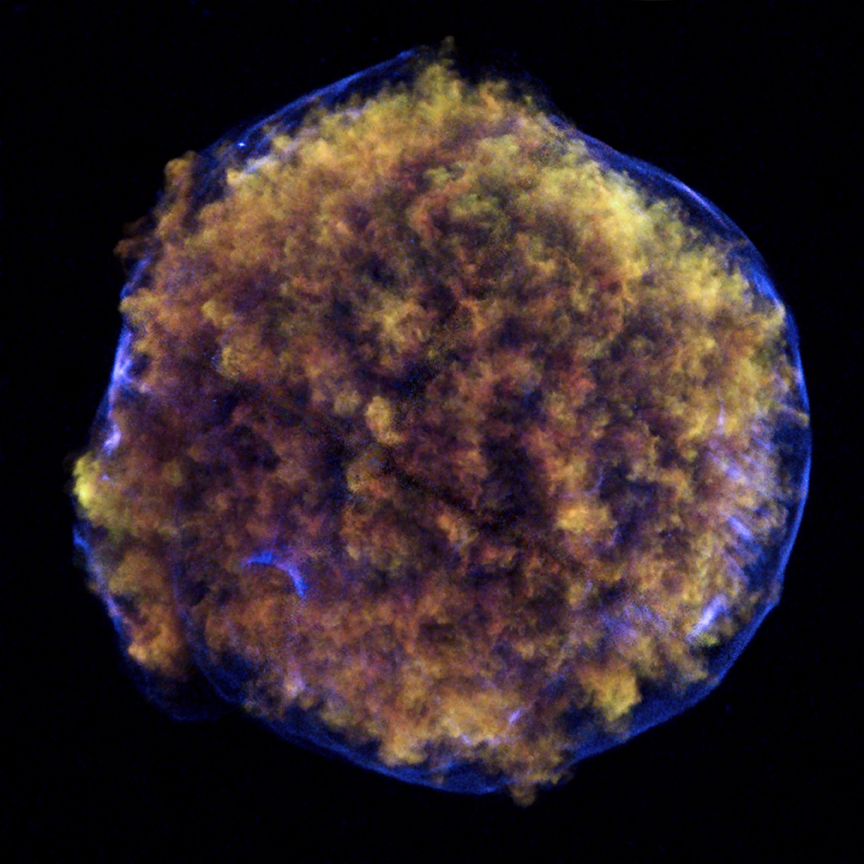IHEP and UMASS find new evidence on origin of supernovas
A team of researchers from the Institute of High Energy Physics, the University of Massachusetts, and Xiangtan University recently used the NASA's Chandra X-ray Observatory to make a discovery which provides strong evidence
 |
| in the lower left region of Tycho is a blue arc of X-ray emission (Credit: NASA/CXC/Chinese Academy of Sciences/F. Lu et al ) |
The new study examined the remnant of a supernova observed by the Danish astronomer Tycho Brahe in 1572. The object, dubbed Tycho for short, was formed by a Type Ia supernova, a category of stellar explosion useful in measuring astronomical distances because of their reliable brightness.
Type Ia supernovas have been used to determine that the universe is expanding at an accelerating rate, an effect attributed to the prevalence of an invisible, repulsive force throughout space called dark energy.
Researchers analyzed a deep Chandra observation of Tycho and found an arc of X-ray emission in the supernova remnant. Evidence supports the conclusion that a shock wave created the arc when a white dwarf exploded and blew material off the surface of a nearby companion star.
"There has been a long-standing question about what causes Type Ia supernovas," said Fangjun Lu of the Institute of High Energy Physics, Chinese Academy of Sciences in Beijing. "Because they are used as steady beacons of light across vast distances, it is critical to understand what triggers them."
"It looks like this companion star was right next to an extremely powerful explosion and it survived relatively unscathed," said Q. Daniel Wang of the University of Massachusetts in Amherst. "Presumably it was also given a kick when the explosion occurred. Together with the orbital velocity, this kick makes the companion now travel rapidly across space."
These new results will appear in the May 1st issue of The Astrophysical Journal. More information, including images and other multimedia, can be found at:
http://chandra.harvard.edu/press/11_releases/press_042611.html